Andros Named Greece’s Top Hiking Destination for 2025
Voters at this year’s Greek Travel…
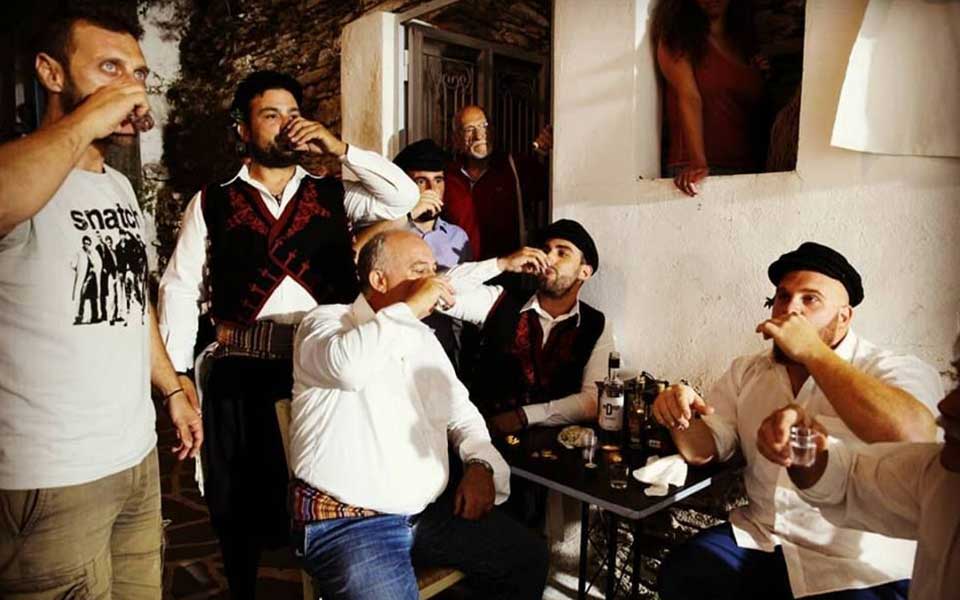
A "Veggera" on Andros island.
© Hellenic Ministry of Culture and Sports
Following a decision by the Greek Ministry of Culture and Sports, the unique customs of six Greek islands have been registered on the National Index of Intangible Cultural Heritage, preserving them for future generations.
In a statement, Minister of Culture Lina Mendoni said: “By recognizing the need for the preservation and promotion of these special aspects of island culture, considered crucial to their own sense of collective history and identity, we register them on the National Index of Intangible Cultural Heritage, actively contributing to their promotion and enrichment.”
The decision relates to specific practices and social rituals from the islands of Andros, Rhodes, Sifnos, Ikaria, Limnos and Nisyros.
The Minister added that the decision to register the traditional island practices was driven by “respect for cultural diversity and human creativity,” and the need to promote and preserve them as “expressions of the special collective identity of each place.”
“Veggera” (Βεγγέρα) is the name given to a characteristic form of social gathering by the inhabitants of Andros, the northernmost island of Cyclades. An improvised form of entertainment, the tradition of the veggera is passed down from generation to generation, and seen as crucial for maintaining social and familial networks across the island’s villages.
Veggera often start as informal family gatherings, usually in the evening and lasting until the early hours of the morning, where handmade treats are offered, followed by various events, music, drinking and dancing. Variations exist between families and communities, but the main emphasis is on wider social interaction.
Expressions in the day-to-day language of the Andriots include “I go for veggera” and “I do veggera,” highlighting the ritual as an important and enduring part of the island’s culture.
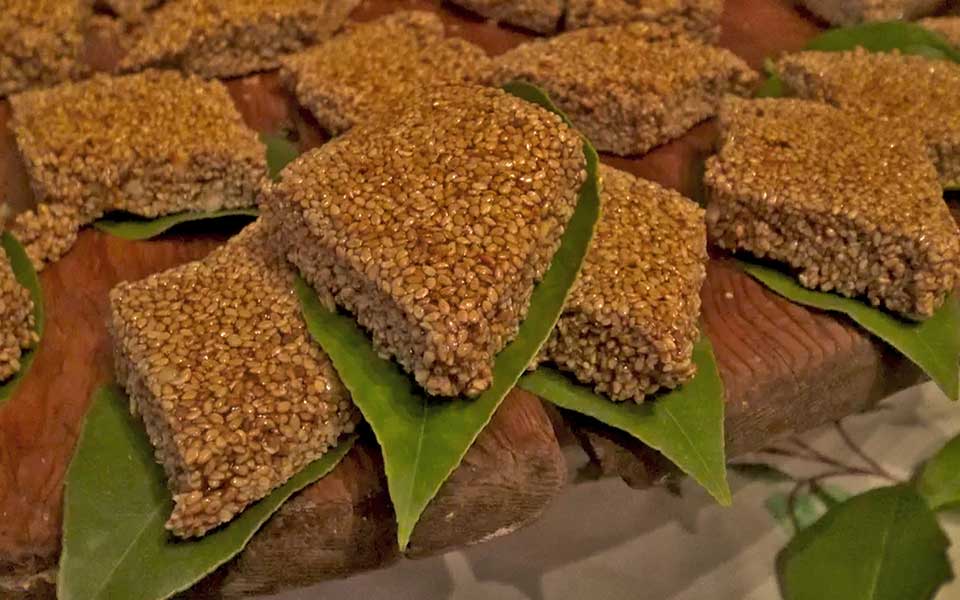
Traditional "melekouni" from the village of Koskinou, Rhodes.
© Hellenic Ministry of Culture and Sports
Melekouni (Μελεκούνι) is a traditional sweet produced in the village of Koskinou on Rhodes, famous for its brightly colored houses. The name of the sweet is a compound of the Greek word for honey, “méli,” and “kounni,” which, in the Rhodian dialect, means “seed.”
Made with sesame seeds, honey, almonds, citrus zest and spices, melekouni has a soft, chewy texture and is golden yellow in color. The sweet is also produced in the neighboring villages of Afandou and Lindos, but is most often associated with Koskinou. It is widely believed that the process by which it is made has remained unchanged for centuries.
Melekouni is traditionally offered at weddings, baptisms and name days in the village, and has been registered as having a protected designation of origin (PDO) by the European Union. Its inclusion on the National Index of Intangible Cultural Heritage is due to the role it plays in the collective memory and eating habits of the villagers.
The Cycladic island of Sifnos is world renowned for its beautiful handcrafted pottery. For centuries, the island’s inhabitants have been continuously engaged in the production of ceramics, an industry that forms a key part of their cultural heritage and collective sense of identity, as well as playing a vitally important role in the local economy.
Today, over 15 workshops remain active across the island, employing traditional techniques and decorative motifs. As such, the potters of Sifnos are in high demand across Greece, many having established workshops on the mainland and other islands.
The unique ceramic tradition of Sifnos highlights an art form that defines the collective memory and identity of the islanders.
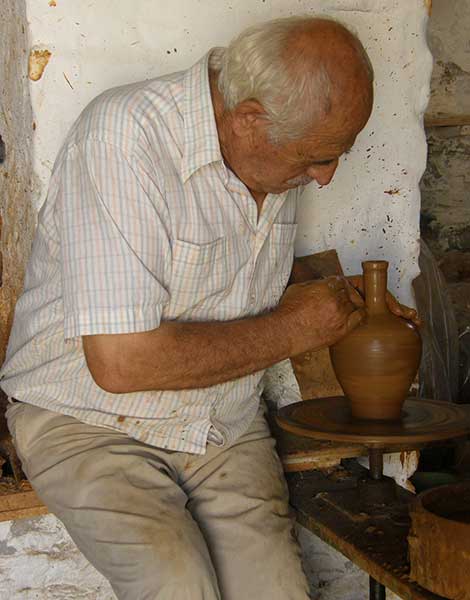
A traditional potter at work on Sifnos.
© Hellenic Ministry of Culture and Sports
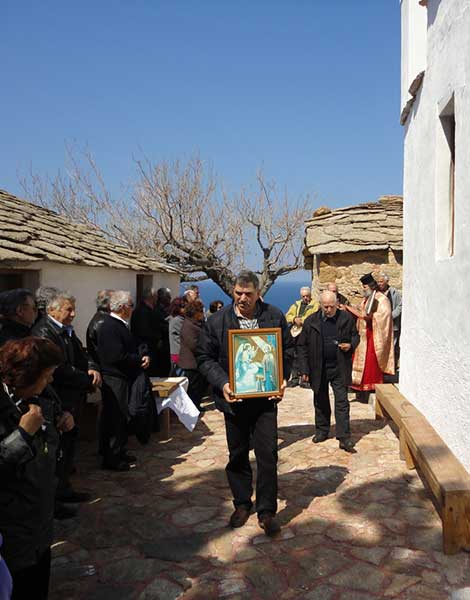
One of the many religious festivals on the island of Ikaria.
© Hellenic Ministry of Culture and Sports
Famous for being one of the world’s five “Blue Zones” – places where a high percentage of the population lives to an advanced age (one in three reach their 90s) – the island of Ikaria hosts more than 80 festivals throughout the year, celebrating various Christian holidays.
The festivals, open to locals and visitors alike, include traditional music and dance, and serve to renew and maintain social and familial ties across the island. In turn, participation in the festivals further engenders a sense of “belonging” and solidarity – the strengthening of sacred social bonds and island identity.
Through the festivals, traditional Ikarian songs, dances, stories, and recipes are passed down from generation to generation.
The remote island of Limnos, located in the northern Aegean, remains deeply rural and, mercifully, untouched by mass tourism. Famous for its production of delicious cheeses and wines, the island’s arid and mostly flat landscape is home to a range of agriculture, including cereals, legumes and sesame.
The “mantres” (Μάντρες meaning “yards”) form the cornerstone of the agricultural infrastructure of the island, places of production where people can gather, share resources, discuss and inform each other on farming practices, and manage the local economy.
A mantra is best described as a complete production unit, typically consisting of a main building, several auxiliary spaces for storage, and the surrounding agricultural land.
Today, a network of mantres exist across the island, recently mapped by the Terra Limnia program, which identified traditional mantres in the areas of Vigla, Fakos, Hephaestia and Fysini. Associated with the production of high-quality agri-food products, the mantres of Limnos are a living example of how to organize a local economy in harmony with the surrounding landscape.
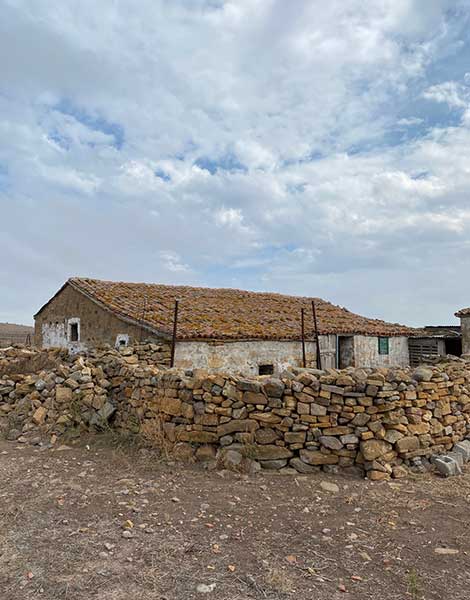
A traditional "mantra" (or "yard") on Limnos.
© Hellenic Ministry of Culture and Sports
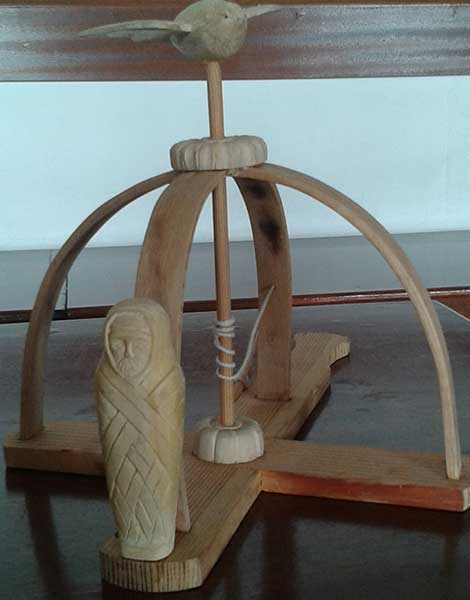
A "Kalandira" from Nisyros, used to commemorate the Resurrection of St. Lazarus.
© Hellenic Ministry of Culture and Sports
Nestled among the Dodecanese, the small volcanic island of Nisyros is home to the generations-old custom of the Kalandira (Καλαντήρα), celebrated each year on Lazarus Sunday.
During the celebration, school children, carrying specially-made bouquets of flowers and palm fronds (known as “vagia”), parade through the villages singing a poem about the Resurrection of Lazarus, a miracle of Jesus recounted in the New Testament. The children then walk around the Kalandira, a wooden object composed of two flexed, arc-shaped pieces forming a cross, and decorated with flowers.
Traditional pastries are also prepared for the day, baked in the shape of Saint Lazarus, and shared among the children.
The custom is an integral part of the social life of the islanders, bringing families and communities together. The event is also an example of the customary practices developed to commemorate Lazarus Sunday, a moveable feast before Palm Sunday.
Voters at this year’s Greek Travel…
Permanent barrier installed at the Portara…
The volcanic island of Nisyros has…
Greece designates the uninhabited Cycladic island…